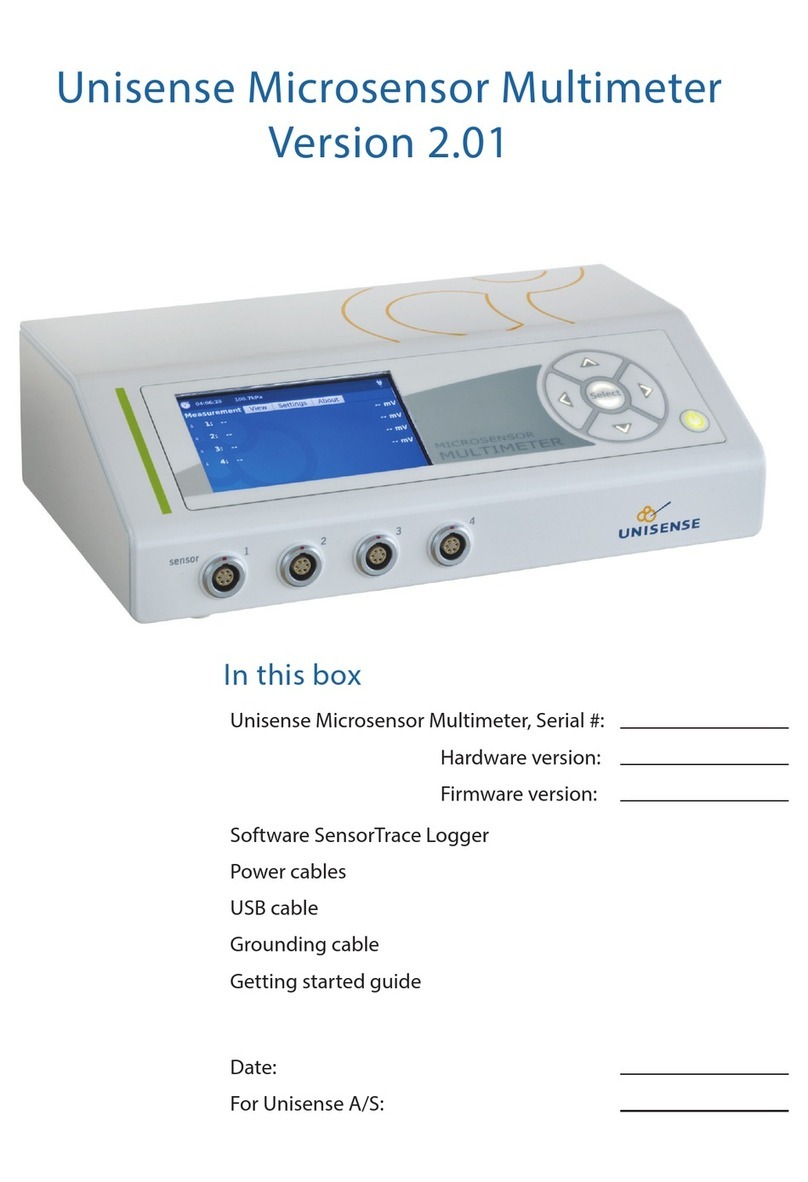
6
NOTICE TO PURCHASER
This product is for research use only. Not for use in human diagnostic or
therapeutic procedures.
WARNING
Microsensors have very pointed tips and must be handled with care
to avoid personal injury and only by trained personnel.Unisense A/S
recommends users to attend instruction courses to ensure proper use of
the products.
WARRANTY AND LIABILITY
The oxygen MicroOptode Sensor is covered by a 1 year limited warranty
or 1 million data points (estimated 300 hours of measurements).
Wear-off of dye resulting in reduced signal quality, e.g. from profiling
into biological matrices like sediments,and bend and breakage of the
fiber optic cable is not covered by the warranty.
MicroOptodes are consumables. Unisense will only replace
dysfunctional sensors if they have been tested in accordance with the
instructions in the manual within 14 days of receipt of the sensor(s).
The warranty does not include repair or replacement necessitated by
accident, neglect, misuse, unauthorized repair, or modification of the
product. In no event will Unisense A/S be liable for any direct, indirect,
consequential or incidental damages, including lost profits, or for any
claim by any third party, arising out of the use, the results of use, or the
inability to use this product.
Unisense mechanical and electronic laboratory instruments must
only be used under normal laboratory conditions and a dry and clean
environment. Unisense assumes no liability for damages on laboratory
instruments due to unintended field use or exposure to dust, humidity
or corrosive environments.
REPAIR OR ADJUSTMENT
Sensors and electrodes cannot be repaired. Equipment that is not
covered by the warranty will, if possible, be repaired by Unisense A/S
with appropriate charges paid by the customer. In case of return of
equipment please contact us for return authorization.
For further information please see the document General Terms of Sale
and Delivery of Unisense A/S as well as the manuals for the respective
products.
WARRANTY AND LIABILITY




























